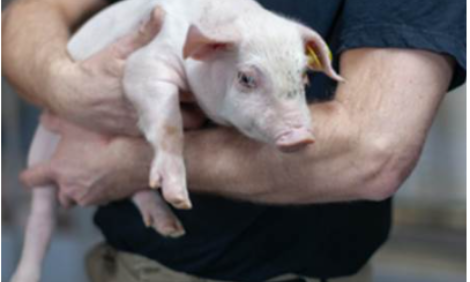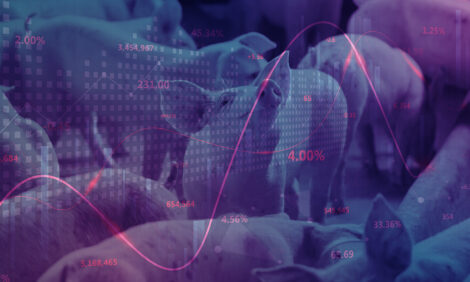



Variation Immune Response and Viraemia in Experimental Challenges with Porcine Circovirus
Researchers at the University of Nebraska showed that the growth rate of pigs infected with porcine circovirus 2 (PCV2) was more closely but inversely related to the replication rate of the virus than to antibody levels.PCV2 is the primary agent responsible for inducing a group of associated diseases known as Porcine Circovirus Associated Diseases (PCVAD), which can have detrimental effects on production efficiency as well as causing significant mortality, according to Daniel Ciobanu of the University of Nebraska, Lincoln and co-authors there and at Bluegrass Community & Technical College and the University of Alberta.
In their paper in BMC Veterinary Research, they explain that the objective of their study was to evaluate variation in viral replication, immune response and growth across pigs (n=974) from different crossbred lines. The approach used in this study was experimental infection with a PCV2b strain of pigs at an average of 43 days of age.
The researchers found that the sequence of the PCV2b isolate used in the challenge was similar with a cluster of PCV2b isolates known to induce PCVAD and increased mortality rates.
The swine leukocyte antigen class II (SLAII) profile of the population was diverse, with nine DQB1 haplotypes being present.
Individual viraemia and antibody profiles during challenge demonstrate variation in magnitude and time of viral surge and immune response.
The correlations between PCV2-specific antibodies and average daily gain (ADG) were relatively low and varied between −0.14 to 0.08 for IgM and −0.02 and 0.11 for IgG.
In contrast, PCV2 viraemia was an important driver of ADG decline following infection; a moderate negative correlation was observed between viral load and overall ADG (r=−0.35; P<0.001). The pigs with the lowest 10 per cent level of viral load maintained a steady increase in weekly ADG (P<0.0001) compared to the pigs that had the 10 per cent greatest viral load (P<0.55).
In addition, the highly viraemic group expressed higher IgM and IgG starting on days 14 and 21, respectively, and higher tumor necrosis factor – alpha (TNF-α) on day 21 (P<0.005) than the low-viraemic group.
Ciobanu and co-authors conclude that molecular sources of the observed differences in viraemia and immune response help provide a better understanding of the host factors that influence the development of PCVAD and may lead to improved knowledge of swine immunity.
Reference
Engle T.B., E.E. Jobman, T.W. Moural, A.M. McKnite, J.W. Bundy, S.Y. Barnes, E.H. Davis, J.A. Galeota, T.E. Burkey, G.S. Plastow, S.D. Kachman and D.C. Ciobanu. 2014. Variation in time and magnitude of immune response and viremia in experimental challenges with Porcine circovirus 2b. BMC Veterinary Research. 10:286 doi:10.1186/s12917-014-0286-4
Further Reading
You can view the full report by clicking here.
Find out more information on PMWS / PCV by clicking here.
January 2015








